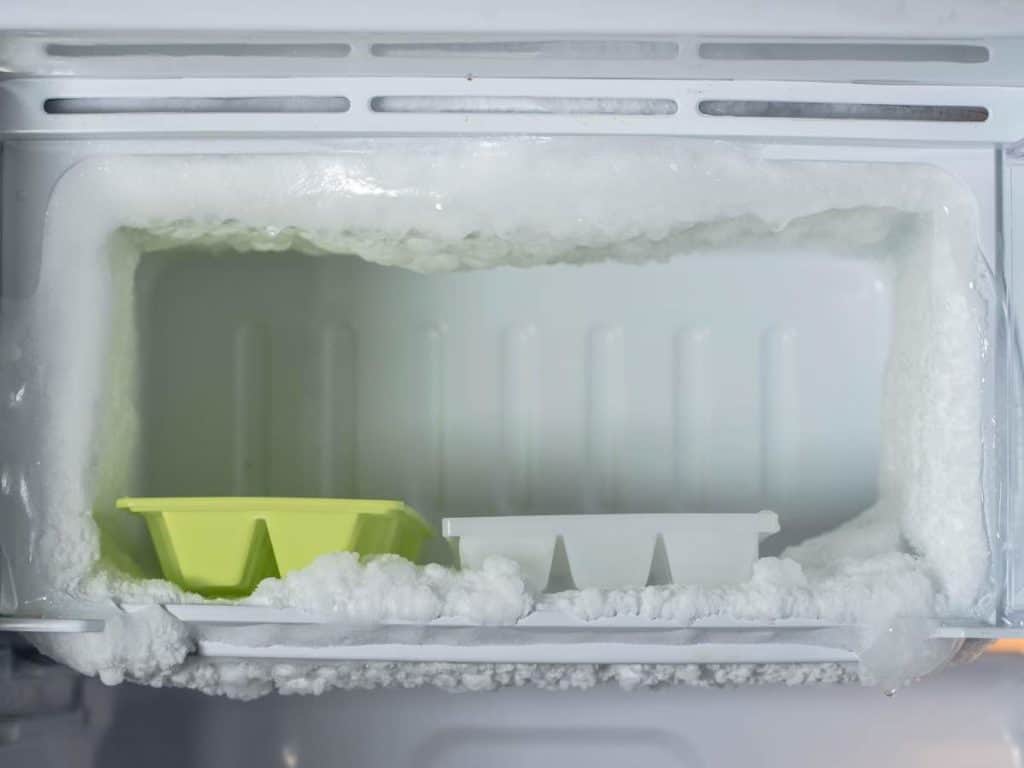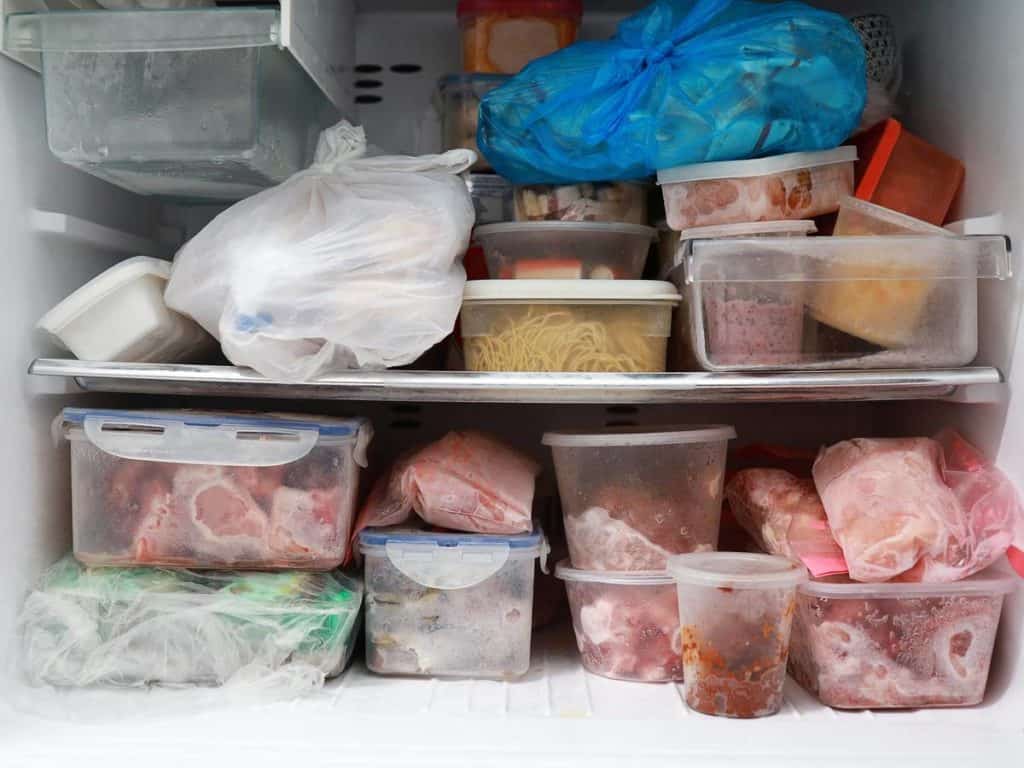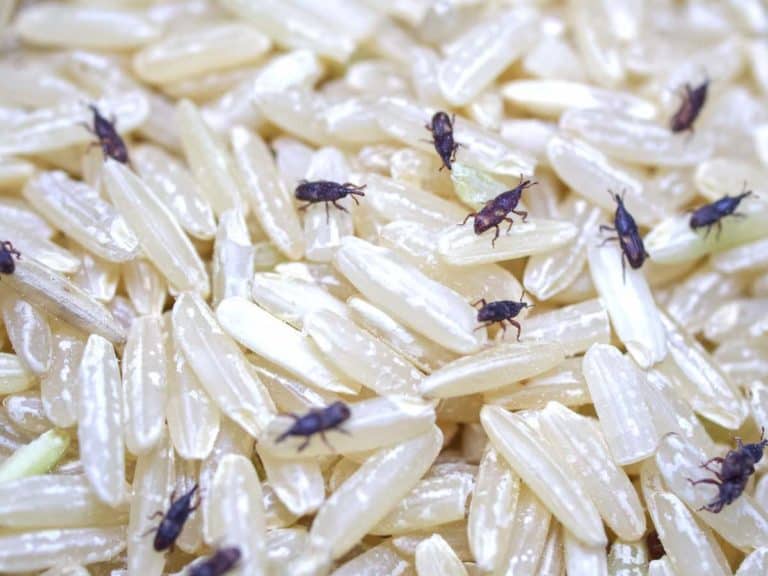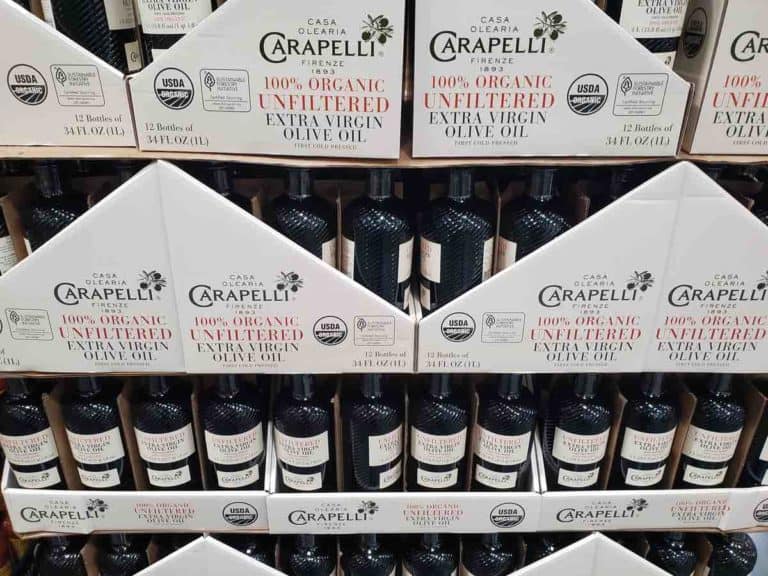Can Mold Grow in the Freezer?
The freezer can keep food products fresh for several months or years or even indefinitely. And this is why it can be extremely shocking and unsettling to see a moldy frozen item in your freezer. Is there no place in your kitchen where foods can be completely free from the clutches of molds?
Mold can grow in the freezer if the freezer is not working properly, unplugged for a while, or opened and closed frequently. Low temperatures in a freezer can only deactivate mold and not destroy them. When the temperature in the freezer rises, the mold gets reactivated and allowed to grow and reproduce.
You can count on your freezer to keep perishable food items out of harm’s way.
However, your freezer cannot do it alone.
It’s also a must that you do everything necessary in order to make sure that your freezer can do its job in keeping its contents from going bad, which is why you shouldn’t stop reading now — in this post, you will learn how mold can grow in the freezer and what you can do to keep that from happening.

Does the Freezer Kill Mold?
The freezer does not kill mold. What the freezer does instead is put mold into suspended animation, thus keeping it from multiplying. The moment the temperature rises to a conducive level, which is between 60°F and 80°F (16°C and 27°C), mold becomes active and thus capable of proliferating again.
Various agents can kill mold. However, the vast majority of them are not food-grade — what’s the use of killing mold in food only to replace it with harmful and toxic chemicals?
Mold cannot survive high temperatures. As a matter of fact, it will die when exposed to temperatures of anywhere between 140°F and 160°F (60°C to 71°C). It’s exactly for this reason why many professional mold removal service companies use heat treatment in order to make the homes of their clients mold-free.
On the other hand, mold can survive low temperatures, including below-freezing temperatures.
Refrain from assuming that your freezer is a completely useless appliance as it can’t destroy mold. While it’s true that it can’t kill mold, it can deactivate it — it’s by shutting off mold activity why it can keep perishables fresh.
So, in other words, for as long as the food product is stored in your freezer, it’s safe from going bad as a result of mold. It doesn’t matter if you place it in the freezer free of mold or already harboring some of it — your freezer will keep it from spoiling due to mold or any other microbe.
What Can Cause Mold to Grow in the Freezer?
A freezer that isn’t working properly and thus cannot maintain ideal temperatures can harbor mold growth. The presence of moisture in the freezer, usually due to malfunctioning or defrosting, can cause molding. Opening the freezer often may also cause mold to grow on frozen foods and the freezer itself.
Just because a freezer can keep food from being moldy doesn’t mean that it can do its job no matter what.
In some instances, it’s still possible for perishable food products stored in the freezer to wind up moldy. Mold growth can begin in one item and spread into adjacent items and even onto the freezer wall.
Because it’s the low temperatures inside a freezer that allow the kitchen appliance to prevent mold, it’s a must to see to it that your freezer is capable of carrying out the task for which it was designed primarily. Otherwise, any food product you keep in it will only end up spoiled, resulting in wastage of food and money.
Here are some of the most common things that can promote mold formation in the freezer:
- Malfunctioning. A freezer that’s not in tip-top shape won’t be able to reach and maintain the temperatures necessary to keep food items from spoiling. Some telltale signs that your freezer needs to be checked include a loud or hot motor, ice or condensation formation, and unnecessary food spoilage.
- Defrosting with the door closed. When defrosting your freezer, make sure that you leave the door open from start to finish. The increasingly warm environment and pooling of water can make it easy for mold to grow and multiply — any thawing items in the freezer being defrosted can easily get contaminated.
- Unplugging or power outage. Leaving the freezer unplugged for a while may encourage mold to form as the temperature inside rises. In the case of power outages, it’s a good idea to minimize opening the freezer door in order to keep its contents out of harm’s way until the power goes back on.
- Frequent opening. Especially if the food products you just placed in the freezer are packed with moisture, consider opening the freezer door to a minimum. The goal is to allow the freezer to carry out its job of freezing them as quickly as possible, which frequent opening of the freezer can keep from happening.
How Do You Clean a Moldy Freezer?
To clean a moldy freezer, it has to be manually defrosted and emptied of its food contents. Full-strength vinegar should be sprayed onto moldy surfaces and areas in the freezer and allowed to sit for 20 minutes. Scrubbing the freezer with a baking soda solution or soapy water should be done afterward.
Immediately removing a moldy item from the freezer and throwing it away can keep the rest of the food products stored in the freezer from suffering the same fate.
However, it’s a completely different story if the freezer itself is the one with mold.
The moment you notice that your freezer is moldy, it’s a must that you spring into action right away — you must rid the freezer of mold completely before you attempt to store food items in it. Otherwise, it’s not unlikely for any perishables you put in the freezer to go bad and you and your loved ones to end up sick.

Luckily, there is really no need to get in touch with a professional mold removal service company and pay top dollar. All you have to do is follow these expert-recommended steps:
- Empty the freezer. If your freezer is moldy, chances are that its contents are moldy, too. And that is why it’s a good idea to throw away food products that are no longer sealed in their original packaging.
- Unplug and defrost. Manually defrosting your freezer is a must in order to expose all surfaces with mold. Keep the door open while defrosting and immediately get rid of any water on the floor.
- Spray vinegar. In severe cases, spray the freezer with full-strength vinegar and allow it to sit there for about 20 minutes. Vinegar may be diluted with equal parts of water in mild to moderate cases.
- Scrub with baking soda or soapy water. After giving vinegar enough time to do its task, it’s time to clean the freezer with either a baking soda solution (two cups of baking soda in a gallon of water) or soapy water.
- Allow to air dry. Finally, wipe off excess baking soda solution or soapy water with a clean dry cloth and then allow the freezer to completely air dry with its door open before plugging it in.
Just Before You Store Food in the Freezer
The freezer provides a safe place for food products that can end up moldy. However, the kitchen appliance cannot kill mold — it can only deactivate it. And, more importantly, mold can grow in your freezer if it’s not in a good working condition or its door is constantly opened and closed.
Use properly and take good care of your freezer, and it will take good care of your perishable foods!
Related Questions
Can food mold cause house mold?
In the right conditions and environments, food mold can end up as house mold. A piece of mold bread left on a countertop, for instance, can release spores into the air that can get sucked into the heating, ventilation and air conditioning (HVAC) system, thereby causing them to circulate and grow throughout the home.
Can you eat moldy food if heated?
The majority of mold types are heat-sensitive and thus get destroyed at temperatures between 140°F and 160°F (60°C and 71°C). However, most toxins produced by molds are heat-resistant, which is why they may not get fully destroyed by exposure to high temperatures such as cooking.





